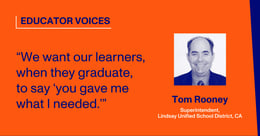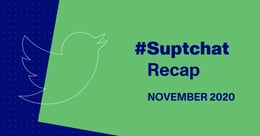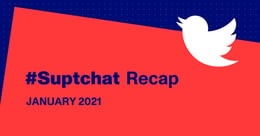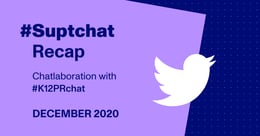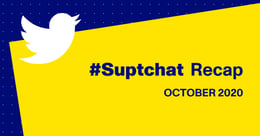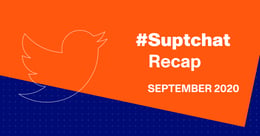
How to Do Emergency Distance Learning Right, According to an Expert
Dr. Kelvin Thompson is the executive director of the Center of Distributed Learning at the University of Central Florida (UCF). He also co-hosts TOPcast: The Teaching Online Podcast, which “takes a fun and informative look at the various trends, best practices, and technologies in the realm of online education."
He holds a doctorate from UCF in Education with a specialization in Curriculum and Instruction. Kelvin wrote his dissertation on the implementation of online courses back in 2005, has collaborated on the design of hundreds of online and blended courses over the past twenty-one years and is active in the online education community.
His expert background in teaching in online and blended environments prompted the Paper team to ask him for his insights on the situation, and share his advice for school districts during COVID-19: How we should currently be prioritizing people over procedure, humanizing online education, and putting a big asterisk next to assessment and evaluation.
We began our conversation by discussing how higher education institutions were around two weeks ahead of K-12 ones in announcing closures. They were also in a better place to make the transition to online instruction: More than 85 percent of UCF students already take at least one online or blended course every year. But Kelvin was sensitive to how difficult the transition would be for the schools and districts near him. He is close to the K-12 world; he used to work at a public district, his wife currently works as a high school guidance counselor, and his daughter is a high school student.
Dr. Thompson decided to collaborate with some colleagues to create a resource package intended for schools and districts in the Central Florida area. They compiled a list of resources, videos with tips on putting classes online, podcasts on remote teaching, and even began sending out messages of support to fellow teachers. “We don’t think it's a parachute from heaven or an instant fix,” he said, “but a gesture of, ‘I hope this is useful,’ and that we’re all in this together.”
When asked what he thinks districts should keep in mind in their responses to the pandemic, Kelvin had two pieces of advice to share:
- Do not confuse emergency distance learning with regular online learning.
- While we're still in this emergency phase, prioritize people over procedure.
He emphasized that there is an ongoing massive conflation amongst school communities and educators between the online learning we’re seeing in the face of a pandemic, compared to regular online learning. We should remember the two are far from being the same.
“We’re just trying to get through,” he said, “everyone’s rushing.” What we’re seeing districts do now is very different from the scenario in which they would have conceptualized intentional, well designed, well-delivered online courses and programs. “You may adopt tools, you may start using online techniques. Here’s a screwdriver, here's a wrench — you're using some of that, yes, but that doesn't make you a master mechanic.”
He said it has been interesting to watch teachers who have only ever done face-to-face try to find ways to connect with their students. They are trying various programs to see what works well for them and their students, and Kelvin admires their efforts, as it’s critical to maintain connections with students. He said this is a lesson the higher education world has already learned: “Engagement and interaction, it’s key, it humanizes. Anything we can do to offset [the distance] is a good thing.”
He brought up a fellow educator, Dr. Michelle Pacansky-Brock, whose work specializes in humanizing online education. He has interviewed Michelle for his own podcast, and in the episode, they delved into how humanizing is important for the design and teaching of actual online courses, and even more so in the COVID-19 era.
While engagement can certainly humanize the online schooling experience, we must remember that a lot of students are facing new personal challenges while they stay home, and might be unable to engage with distance learning plans outlined by their schools.
Dr. Thompson outlined the following for educators to keep in mind with respect to student engagement during distance learning:
- Don’t be unrealistic about expectations for student engagement.
- But do try to foster student engagement — you might be amazed by what can happen.
Kelvin stated that students’ engagement and interaction levels in the online environment should be compared to what they were previously, in the classroom. Moreover, “mandating” certain standards for online engagement might not be that effective, considering that educators weren’t engaging with students on a truly one-to-one basis when delivering lessons in physical classrooms.
Throughout our conversation with Dr. Thompson, he drew our attention to human priorities during the pandemic.
Even when discussing how he thinks the pandemic will affect assessment and evaluation, he said: “Don’t penalize anybody in this situation. People are doing the best they can. Thank them for it and move on.” When it comes to operational data, student grades, teacher appraisals and evaluations, Kelvin thinks there should be a giant asterisk next to it all for the coming seasons. “We’re all dealing with a lot right now,” he said, “people need to bring their standards down and be human.”
More from Dr. Kelvin Thompson
Follow Dr. Kelvin Thompson on Twitter, and listen to TOPcast: The Teaching Online Podcast. Read more about his work at UCF here.

